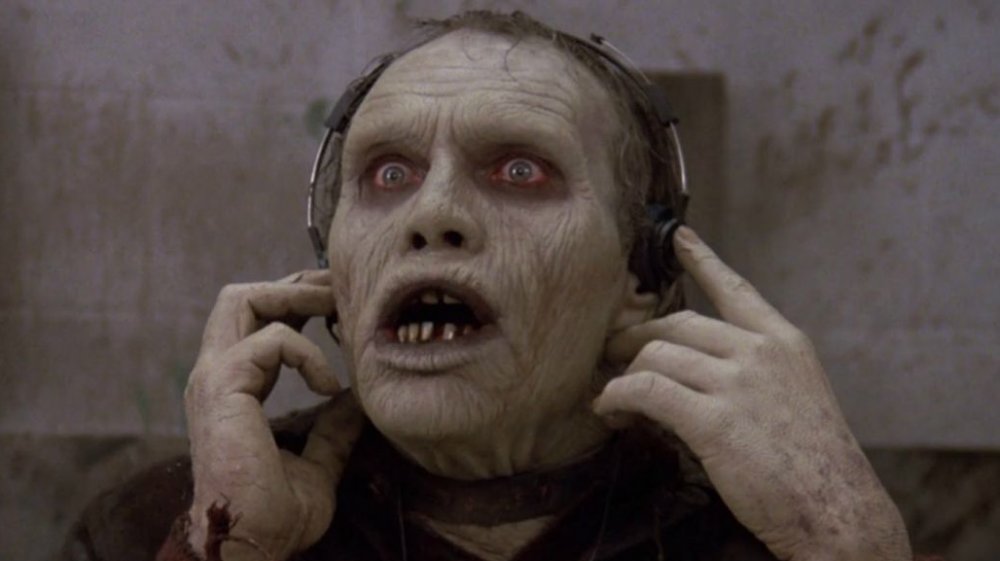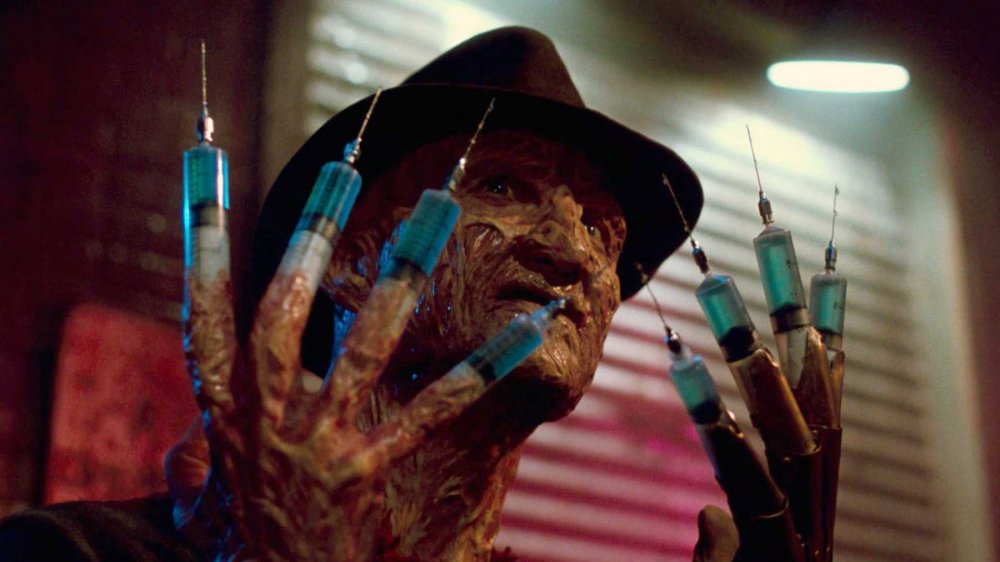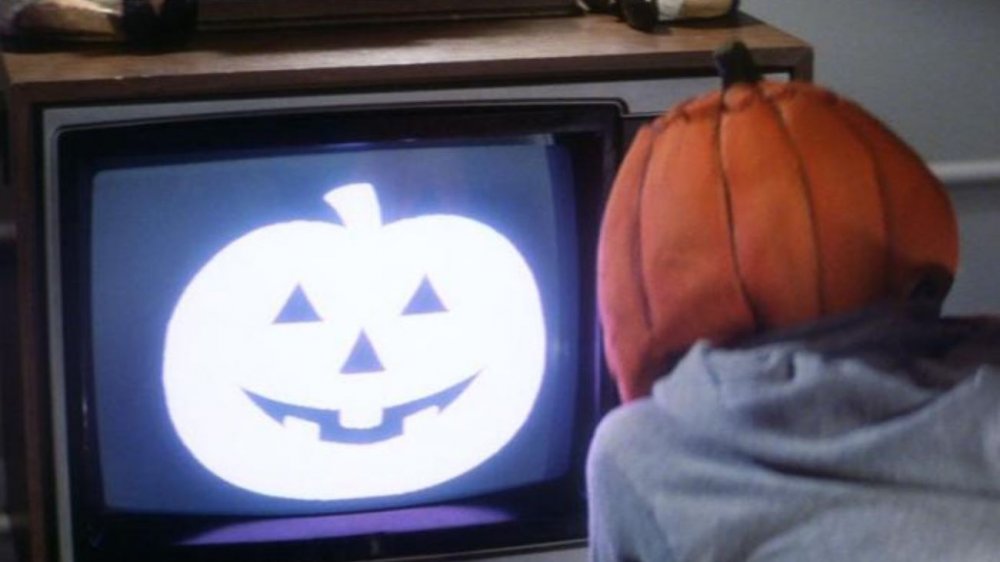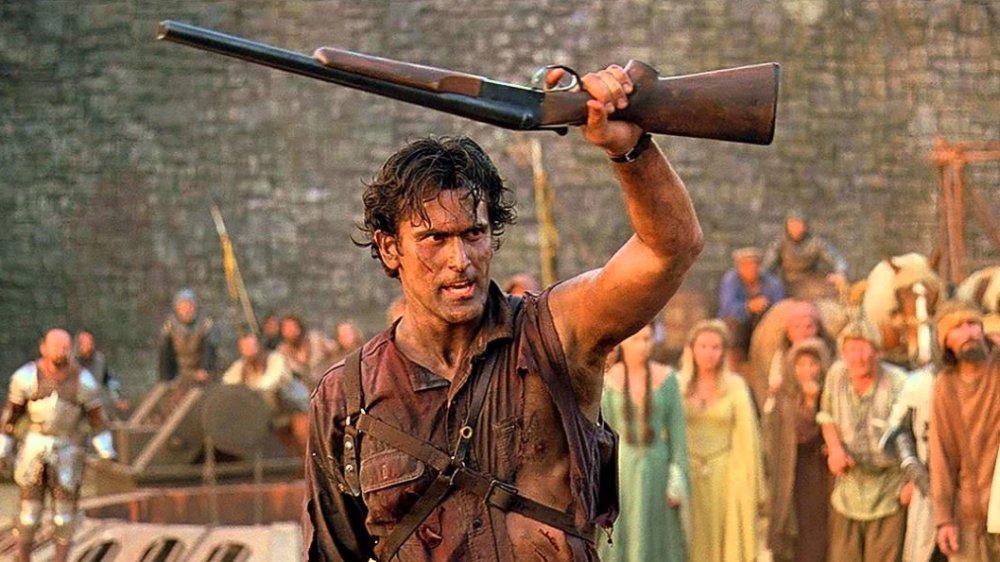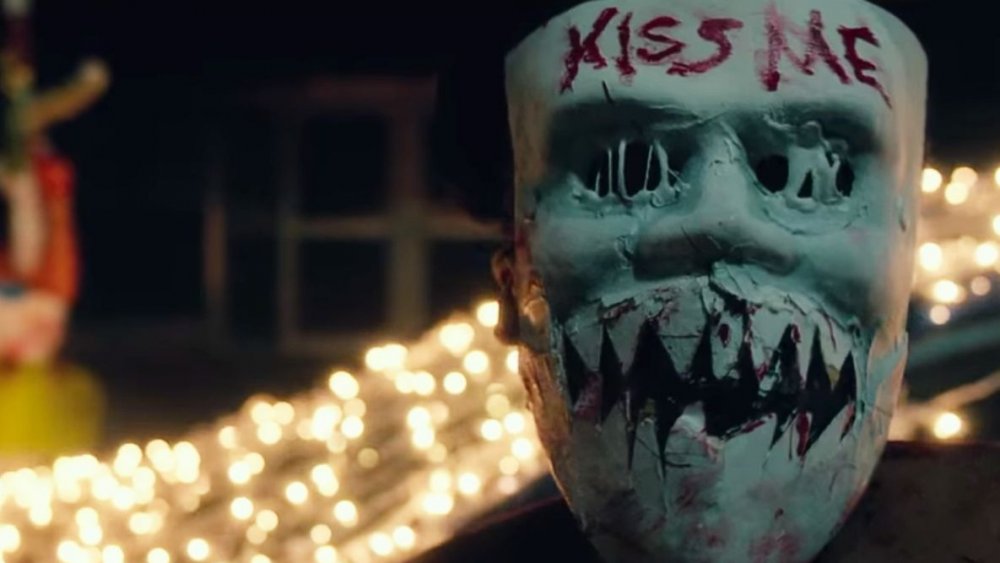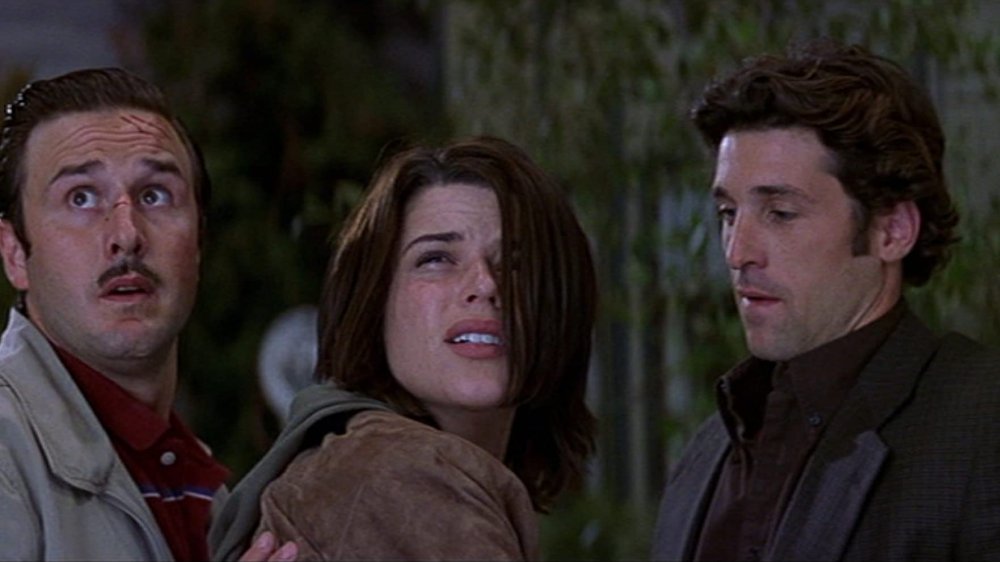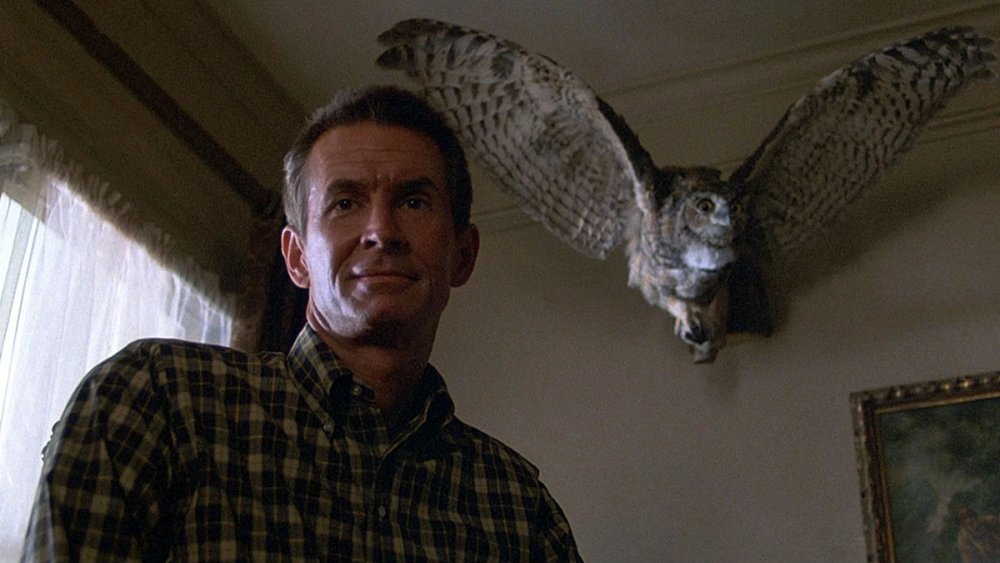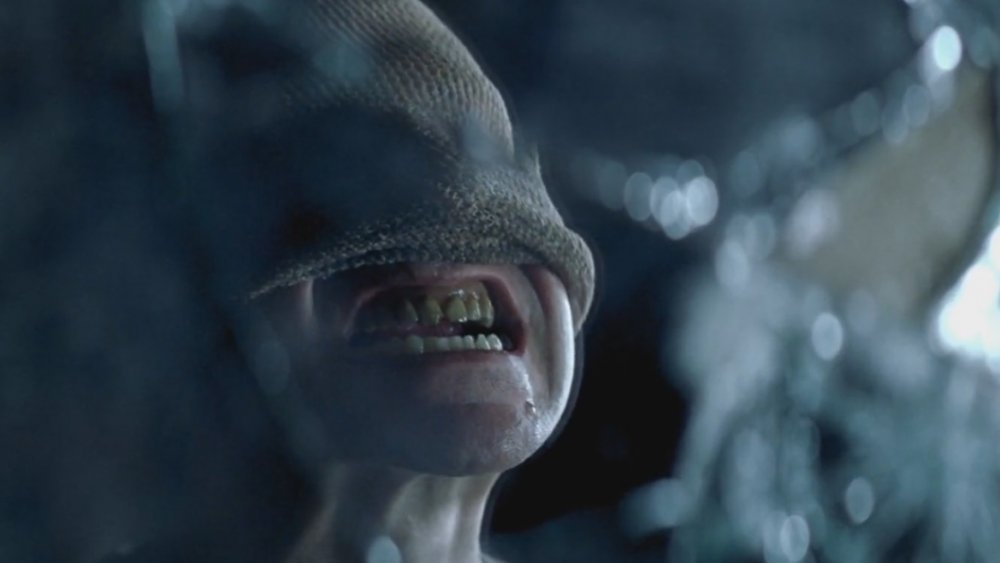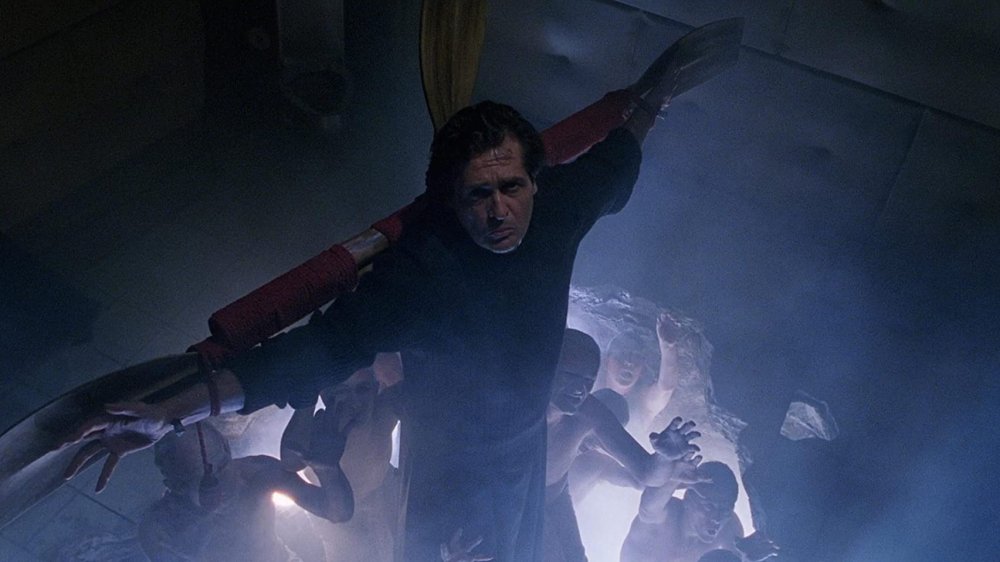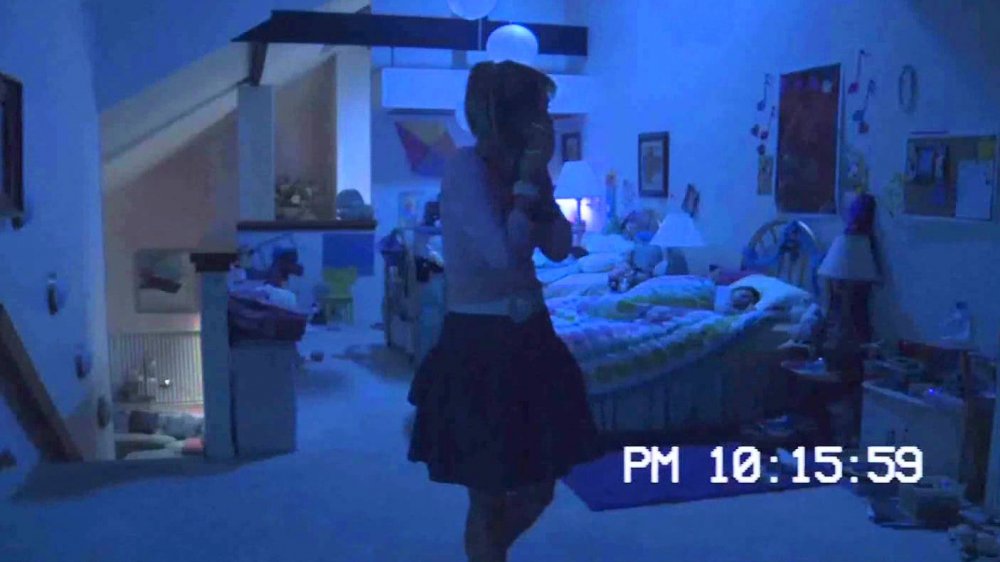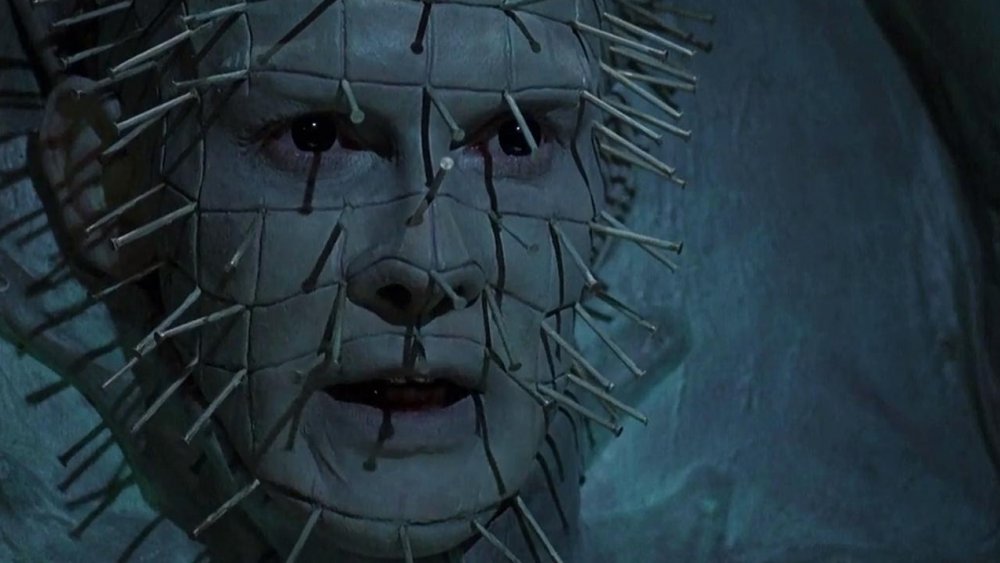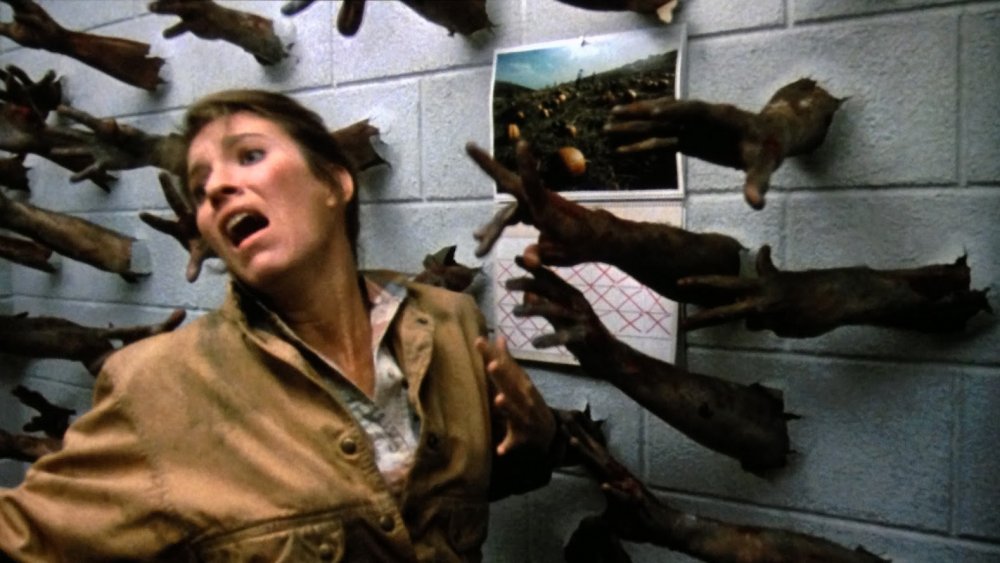The Greatest Horror Threequels Ever
Everyone loves a good horror franchise. Heck, sometimes we love a bad horror franchise even more than the good ones. In either case, there's something delightful about watching a horror series ebb and flow from good to bad and hopefully back to good again — though let's face it, it usually continues its tailspin toward the worse.
But not always. While the first installment in a much-loved horror franchise tends to be the high point and the second outing seemingly always goes awry, it's with the third attempt that we get to see whether or not a series can redeem itself. More often than not, the threequel is where things truly go off the rails (we're looking at you, Jaws 3-D), but every once in a while, we get to see the old adage about the charmed third try come true.
Whether the filmmakers deepen and build upon the successful elements of the previous films, or they decide to take the franchise in a new direction altogether, sometimes the third go-round gives us something truly and surprisingly special. To that end, here are the greatest horror threequels ever.
A Nightmare on Elm Street 3: Dream Warriors brought Freddy back in style
When Wes Craven brought the golden era of slasher flicks to a close with 1984's A Nightmare on Elm Street, genre fans were thrilled by the introduction of one of the most unique horror concepts in movie history, centered around one of its most unique villains — the great Freddy Krueger, who stalks his victims from within their dreams. The original installment was packed with terrifying jump scares, frightening visuals, and an eerie premise the proved to follow many a moviegoer to bed. Audiences were less impressed by the sequel A Nightmare on Elm Street 2: Freddy's Revenge, which was panned as something of a mess without any scares.
When the franchise stepped up to the plate for a third time, however, it hit a home run with A Nightmare on Elm Street 3: Dream Warriors. By bringing back Wes Craven to help with the screenplay, the resulting film offered a more expansive premise that pitted Freddy against a team of teens rather than a single dreamer, along with some flat-out awesome set design and visual effects in the dream sequences. The script also wisely brought back the original Freddy survivor, Nancy Thompson, and the cast introduced us to up-and-coming stars Patricia Arquette and Laurence Fishburne.
Halloween III: Season of the Witch is an underrated horror threequel
To say that 1978's Halloween is a great film would be a massive understatement. By itself, it stands alone as a solidly scary piece of work, from its terrifying killer to its unsettling direction to its haunting score. But beyond that, Halloween had a massive impact on the movie industry, helping to usher in the era of slasher horror and becoming essential viewing every October 31. All in all, legendary director John Carpenter crafted a film that set the standard for horror movies of its time. The sequel Halloween II, however, proved to be of significantly lower caliber, literally picking up where its predecessor left off before devolving into banality. Critics and audiences alike gave it a collective shrug.
And, admittedly, upon its release, the third installment got much of the same treatment. A complete diversion from the Halloween concept, Halloween III: Season of the Witch has nothing to do with killer Michael Myers, instead delving into a story about a mad scientist who creates a line of satanic Halloween masks that kill anyone who wears them. The idea at the time was to turn the franchise into a series of one-off stories relating to the titular holiday, which was an admirable concept, but moviegoers looking for more kills from a William Shatner-faced psycho were disappointed.
More recently, however, Halloween III has received something of a reappraisal. Today, genre fans are judging this franchise sidetrack on its own merits, and they're concluding that it deserves recognition for its unique concept, solid special effects, and overall disturbing atmosphere.
Army of Darkness is a zany installment in the Evil Dead franchise
In 1981, director Sam Raimi and actor Bruce Campbell managed to scrape together the funds and equipment necessary to cobble together a little film called The Evil Dead. It was a moderate success financially speaking, but it went on to be hailed as a modern horror classic thanks to its perfect fusion of horrific violence and laugh-out-loud black humor. With what little money the filmmakers earned off the project, they were able to create Evil Dead II, which was both sequel and reboot, polishing the efforts of the original film to produce something that was bigger in every way — bigger effects, bigger technical capabilities, and bigger laughs.
Then Dino De Laurentiis stepped into the picture — a producer famed for throwing money at productions such as Conan the Barbarian, Dune, and many, many others — and gave Raimi and Campbell the $11 million they needed to make the Evil Dead concept really big and really weird. The result was Army of Darkness, which takes the protagonist from the proceeding two films, Ash Williams, and transports him, his car, and his trusty chainsaw and shotgun back to Middle Ages where he must once again fight the living dead.
Army of Darkness leans hard into the comedic elements of the first two films. It's weird and funny and more startling than scary, and did we mention that it's weird? In any case, it makes for a bizarre, fun continuation of the Evil Dead franchise.
The Purge: Election Year was a very timely horror threequel
When The Purge introduced us to its brutal reality in 2013, audiences and critics alike were disappointed in the actual movie but were intrigued by its core concept. In a vague future, the urge to commit crime is tempered by having a single night each year during which people can do anything they want ... even commit murder. The film then followed a family attempting to survive this grisly "purge," primarily while trapped in their own house. The sequel expanded upon this concept, bringing the purge out of the home and into the streets, performing somewhat better than its predecessor, critically speaking.
And then came The Purge: Election Year which — while it received middling reviews, much like its forgoers — ended up snagging a heightened level of attention due to the timing of its release. As you might recall, 2016 brought a rather, ahem, contentious election, to say the least. No matter what your opinion of the real-world election happened to be, a horror movie about a violently political grudge match would have likely struck something of a chord with you. That's probably why it ended up setting a new box office high for the franchise.
Scream 3 has a lot to say about the Hollywood system
In 1996, horror legend Wes Craven wrote and directed Scream, a somewhat satirical take on the slasher genre that he'd helped to shape. While telling a seemingly typical genre story about horny teens being terrorized by a masked killer, Craven managed to deconstruct and poke a bit of fun at the stereotypes in a way that was frightening, funny, and thought-provoking all at the same time. With Scream 2, Craven once again subverted audience expectations, this time by toying with the idea of the typically terrible horror sequel. Scream 2 turned out to be the most critically acclaimed installment in the series, firmly establishing the quality of the franchise.
When Craven returned for Scream 3, critics at the time weren't as sure of the result as they had been with the previous two installments. But in recent years, reviewers have been looking back at the previously maligned prequel and finding not only more to appreciate, but they're actually discovering an entirely new level of meta-commentary due to the fact that the movie — which dealt with a film producer who leveraged his power to extract sexual favors from actresses — was produced by the now-famously exposed predator Harvey Weinstein. In other words, while upon its release, critics were disappointed by its lack of postmodern deconstruction, it turned out that it was saying a whole lot more than anybody knew.
Psycho III was a surprisingly good horror threequel, thanks to its star/director
In 1960, Alfred Hitchcock — perhaps the greatest of the great directors — horrified the world with Psycho, which is widely considered to be the greatest of the great horror movies. The story of a young hotel owner who has, um, a unique relationship with his mother (and that's putting it lightly), Psycho set the standard for quality fright flicks to come. Between its nerve-wracking music, terrifying performances, peering-between-your-fingers tension, and shocking twist, it elevated the genre to new heights. The sequel, released more than 20 years later, fared surprisingly well, proving that Norman Bates still had a few scares up his sleeve.
Then in 1986, when Psycho III hit the big screen, reviewers were pleasantly surprised by what — let's face it — could've been a total disaster. Expectations are low when you're offering a threequel some three decades after a certifiable genius started things off with a masterpiece, but franchise star and first-time director Anthony Perkins pulled it off. And maybe it was because Perkins was behind the camera that Psycho III worked as well as it did. Besides the great Hitchcock himself, it's hard to imagine that anyone else had a stronger grasp on the source material. In any case, the movie offered a more than satisfactory supply of shrieks and scares.
Red Dragon is a solid entry in the Hannibal franchise
When The Silence of the Lambs hit the scene in 1991, it immediately established itself as one of the greatest movies ever made and perhaps the greatest horror thriller ever made. Revolving around the search for a brutal serial killer by an FBI agent seeking the aid of an incarcerated, brilliant psychopath — the infamous Hannibal Lecter — the movie is arguably the most haunting film of the decade. When 2001's sequel Hannibal was released, however, the movie bombed with critics, despite the fact that it eventually proved to be the most financially successful film in the franchise.
The following year brought the release of Red Dragon. Technically a prequel, this threequel breathed life back into the series by providing a gripping, brutal tale that better reflected the original Lambs film than the surprisingly boring second installment. Packed with outstanding actors like Edward Norton, Ralph Fiennes, Harvey Keitel, Emily Watson, Philip Seymour Hoffman, and of course, Anthony Hopkins, Red Dragon portrayed not only the hunt for yet another savage serial killer, but it showed us how the devious Dr. Lecter was captured in the first place.
The Exorcist III is a horror threequel that lives up to the original
When it comes to intensely eerie atmosphere, few films can hold a candle to The Exorcist. Released in 1973, the movie was quickly hailed as the most frightening movie of all time, a distinction that's still often leveled at it to this day. The Exorcist tells the story of the satanic possession of a girl named Reagan, and two priests who attempt to cast the demon from her with terrifying results. While the original movie was hailed for its horrifying visuals and first-rate acting, however, the 1977 sequel Exorcist II: The Heretic was dismissed for coughing up exactly the opposite.
But the franchise surprised everyone by bouncing back with a threequel simply entitled The Exorcist III. Released in 1990, the movie centers around an aging police detective (played by the great George C. Scott) as he investigates a string of murders that seem linked to a series of killings that took place 15 years earlier, during the events portrayed in the first movie. Written and directed by William Peter Blatty — who obviously had a firm understanding to the source material as his novels were the original inspiration for the film series — The Exorcist III feels like a closer relation to the first installment than the second did thanks to its tense ambiance and thought-provoking implications. While the narrative got somewhat muddled by the intrusion of bothersome studio execs, it still delivered enough frights to make it worthy of the Exorcist mantle.
Paranormal Activity 3 reinvigorated the found-footage series
Back in the 2000s, so-called "found footage" horror flicks were all the rage. The trend was kicked off by 1999's The Blair Witch Project, and while dozens of other films attempted to recreate the impact of its low-budget, lo-fi scares, few could deliver the goods. In 2007, however, Paranormal Activity finally got the recipe right. Portraying the goings-on within a haunted house via the perspective of several video cameras placed throughout the home by a paranormal researcher, the film proved to be terrifying in its simplicity. Paranormal Activity was a massive success, raking in $193 million on its mere $15,000 budget. When the sequel came out a few years later, however, the response was decidedly muted.
But when the prequel threequel Paranormal Activity 3 hit the screen in 2011, critics were impressed by the air of dread, surprising scares, and even a new element of humor. In the original installment, the central character Katie had mentioned that she'd been haunted by an evil entity since childhood. Paranormal Activity 3 pounced on the opportunity to tell the story of her youthful terror, to great effect. As of this writing, the franchise is five movies in, and number three has proved to be the most successful yet, collecting $207 million worldwide.
Hellraiser III: Hell on Earth is a fun and frightening movie
While there are a range of tremendously unique horror movie premises out there, there are few that are as singularly original as that offered by Hellraiser. The story of a young woman waging battle against the sadistic forces of darkness unleashed from an alternate universe via a puzzle box, there's nothing quite like it. Lead ghoul Pinhead and his fellow tortured minions were the stuff of pure nightmares, and because the movie explained so little about their background, audiences were left wanting to know more. Hellbound: Hellraiser II provided us with a deeper look at the painful universe from which they hailed, but we still didn't learn much about their origin.
When Hellraiser III: Hell on Earth came around, we finally got a few more answers. The movie provided us with more backstory on the normal human Pinhead once was, and then it set the monster loose in a city where he's presented with more potential victims than either of the previous two installments. Hellraiser III opened the door for deeper exploration into the history of the puzzle box, and it began a trend that saw future installments placing Pinhead in widely varying situations — including space. It also has the dubious distinction of being the last Hellraiser release to receive positive reviews.
The series might have been all downhill after that, but that's not the fault of Hellraiser III, which makes for perfect after-midnight viewing.
Day of the Dead features scary questions and lots of gore
In 1968, a then-unknown director named George Romero released a grainy black-and-white film called Night of the Living Dead, and the horror genre — and indeed the cultural landscape as a whole — was changed forever. Suddenly, zombies entered the public consciousness, and ever since then, they've shambled through our most popular movies, novels, comic books, and TV shows. Ten years later, Romero directed a sequel, Dawn of the Dead, that many consider to be the high point of zombie flicks, period.
Just a few years after that, Romero followed up with Day of the Dead, which — while it was generally agreed to be the lesser of the trilogy up to that point — was still highly acclaimed for its engaging premise, stomach-churning gore, and biting social commentary. Day of the Dead successfully built upon the universe established by its predecessors, taking a logical next step in the story and posing the question, in a world of zombies, what if it's our fellow living, breathing, non-brain-eating humans that we need to fear the most?
This threequel is an attempt to be more thoughtful than frightening but never fear. Thanks to a healthy dose of disgustingly believable practical effects from special effects legend Tom Savini, there's plenty to make you cover your eyes.
